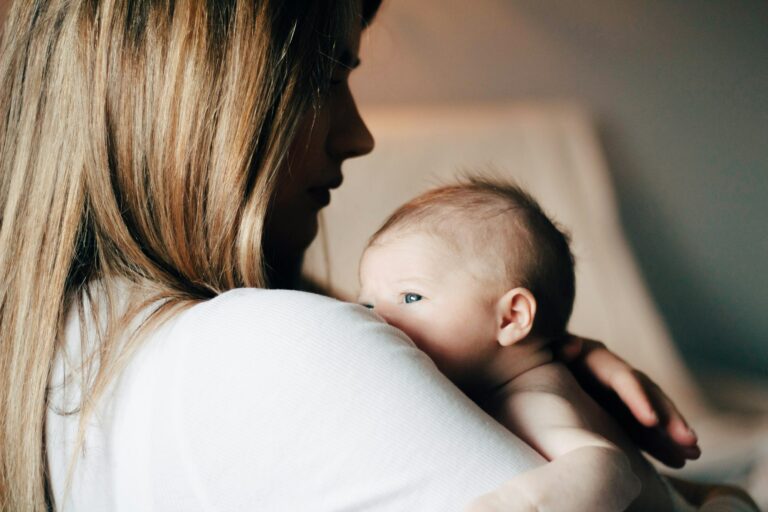Every parent, whether just beginning this journey or adding another chapter, faces that perplexing moment: how to improve baby’s sleep before 4 months. Sometimes, the night stretches into countless awakenings and the days blur with uncertainty—are the naps too short, too long, or just right? Navigating these rhythms can feel overwhelming, yet this period contains so much opportunity for learning and bonding. Improve baby’s sleep before 4 months—such a deceptively simple ambition, but so many variables at play: biology, comfort, nutrition, attachment. Let’s untangle the swirl, address the questions that linger in your mind, and detail strategies that honor your baby’s natural development. Along the way, science, empathy, and practical solutions join hands: nurturing night and day.
Recognizing Baby Sleep Cues: The Art of Timing
Spotting early sleep signals isn’t always straightforward—did your baby just yawn out of boredom, or is fatigue peeking in? Watch closely for a mosaic of hints: yawning, that endearing finger-sucking, the unfocused gaze, flutter-blinks, brief eyelid droops, waning interest in toys. Noticing tiny shifts, like twitchy or slow movements, or simply increased clinginess, sets you up to improve baby’s sleep before 4 months by acting before overtiredness takes over. Overtired babies, arching their backs in protest, rubbing tiny fists into weary eyes, or dissolving into frantic cries, need sleep long before those fireworks go off.
Quality Sleep and Its Medical Underpinnings
Why chase regular, restorative sleep so early? During these first months, each stretch of deep shut-eye supports synaptic growth, memory formation, and the pulsating release of growth hormones—quite literally reshaping the developing brain and body. Calm, well-rested infants (study after study emphasizes this) show more predictable mood regulation and greater curiosity about their world. That’s not mere folklore—polished through evolutionary necessity, this restorative rest optimizes immune responses and stabilizes emotional tone, crafting building blocks for cognitive milestones.
Newborn Sleep: Unique Patterns, Distinct Needs
Sleep for a newborn (that magical 0-4 month window) isn’t just a scaled-down version of older children’s patterns. Picture it more like a robust patchwork—short sleep cycles, about 50 minutes apiece, overlapping day and night without a reliable rhythm yet. Total sleep? Often 14-18 hours in 24, little bursts interwoven with waking for feeds. Don’t be unnerved by the unpredictability—this is a normal, temporary architecture, as the circadian clock (the body’s inbuilt day-night timer) is still under construction. Improving baby’s sleep before 4 months means honoring this natural structure rather than imposing rigid schedules or expecting what’s physiological impossible.
Common Myths vs. Evidence-Based Realities
You’ve perhaps heard whispers that babies can be sleep trained from their first breaths, or that one last heavy feed before midnight will buy you hours of undisrupted rest. Such beliefs, though tempting, don’t align with neonatal physiology.
- Myth: Sleep training works from birth.
Evidence: The nervous system simply isn’t ready; true self-soothing emerges much later. - Myth: Babies should sleep through by 3 months.
Fact: Those night wakings? They’re wired for survival, supporting both nutrition and parental attachment. - Myth: Fancy sleep gadgets make all the difference.
Science: Added pillows, special toys, or “positioners” increase SIDS risk far more than they enhance sleep duration or quality.
Keep the sleep space safe and minimalist, and rely on consistent, calming routines anchored in your baby’s age and cues.
Understanding Sleep Cycles and Wake Windows
Each infant cycles rapidly between “active” (twitchy, rapid-eye-movement, REM) and “quiet” (still, deep, non-REM) sleep. Roughly every 50-60 minutes, these phases flip. The trick to improve baby’s sleep before 4 months often lies in respecting “wake windows”—the slivers of time an infant tolerates between sleep episodes. Here’s the rundown:
- 0-1 month: 20 to 60 minutes awake
- 1-2 months: 30 to 75 minutes
- 2-3 months: 45 to 80 minutes
- 3-4 months: 60 to 90 minutes
Why so short? Excessive wakefulness floods the infant brain with stress hormones (like cortisol), making sleep elusive. If you start nap/bedtime routines at the first signs—not the last—you dodge the common pitfall of overtiredness and its aftermath: restless, fragmented sleep.
Biological Rhythms and Environmental Cues
Human babies don’t arrive calibrated for sunrise and sunset; circadian rhythms (rooted in the brain’s suprachiasmatic nucleus) must form from scratch. Improving baby’s sleep before 4 months means harnessing environmental cues—natural daylight for wake times, low lights and quiet for sleep. Within 6-12 weeks, infants who are routinely exposed to sunlight in the daytime and darkness at night begin to consolidate longer sleep stretches after dusk.
Medical and Nutritional Factors: More Than Just Milk
Growth—measured as steady increases in weight, length, and head circumference—directly shapes sleep quality. Babies in the midst of growth spurts often wake more for feeding; this extra energy intake is not regression, but adaptation. Whether breastfed or formula-fed, infants require frequent, on-demand feeds; breastmilk digests faster, so those babies may seek the breast more at night, while formula might stretch out some intervals.
Spotting early hunger cues—rooting, sucking on fists, lip smacking (not just crying)—allows for timely feeding, supporting metabolic and neurological development, and ironically, helps improve baby’s sleep before 4 months by reducing sleep disruptions from hunger.
Over time, a gentle shift toward separating feeding from falling asleep can ease reliance on feeding as the only sleep cue. This, combined with swaddling (until the first signs of rolling), white noise mimicking the womb, and calming routines, helps many babies settle with a broader array of soothing strategies.
Safe Sleep Practices: Reducing Risks, Enhancing Comfort
Medical research leaves no ambiguity on this point: putting babies to sleep on their backs, on a firm, flat sleep surface, without loose bedding or plush toys, dramatically reduces SIDS risk. Room-sharing on a separate cot or bassinet for the first 6-12 months is safest; bed-sharing, although common, raises suffocation risk.
Swaddling (arms snug, hips loose) can decrease startle reflex and foster longer stretches—just discontinue at the first roll. Maintain temperatures between 20-22°C (68-72°F), use a sleep sack for warmth, and keep humidity near 60% for ease of breathing.
Crafting Soothing Rituals and Calming Environments
What rituals truly help improve baby’s sleep before 4 months? Evidence underscores the magic of routine: dim lights, a brief massage, a touch of white noise, soft lullabies, and a clear shift into sleep attire. These actions act as consistent, gentle cues to transition from activity to rest.
The sleep environment matters: blackout shades for naps and night, white noise to muffle ambient disturbances, and a defined sleep space free of clutter. During the first month, lights and sound matter less, but by 2-3 months, minimizing stimulation at nap and bedtime can lengthen rest periods.
Encouraging Self-Soothing and Sleep Independence
Many parents wonder when to begin guiding their infant toward falling asleep alone. Before 4 months, the focus has to remain responsive, but subtle steps can help: try laying your baby down drowsy but awake on occasion, offer soothing (patting, gentle shushing), and, if needed, pick up/soothe/put down. Over time, these approaches lay the groundwork for improved self-soothing as the central nervous system matures.
It’s a marathon, not a sprint—most babies don’t reliably “self-settle” until 4-6 months, and even then, night waking is common. The watchwords: patience, calm consistency, a willingness to adapt.
Supporting Day-Night Sleep Organization
Expose your child to bright daylight each morning—perhaps a family walk or just near a sunny window. Keep bedtime and nap interactions soft, voices low, movements unhurried. Even diaper changes at night benefit from minimal fuss and dim lighting, reinforcing the difference between day and night.
Rethinking the Notion of “Bad Habits”
A pressing question for many: will rocking, feeding, carrying, or white noise spoil a baby’s ability to sleep independently? For infants under 4 months, building trust, security, and a sense of safety matters far more than any habit. Nurturing, responsive caregiving lays sturdy foundations for all future sleep skills.
Psychological and Emotional Wellbeing
Responsiveness is not just a matter of comfort; it is medicine for the growing brain and for parent-child bonding. Consistent, attuned responses lower both your and your baby’s stress, enhancing emotional wellbeing for the whole family.
Taking breaks and seeking support—whether from family, friends, pediatricians, or sleep consultants—is a wise investment in both your resilience and your baby’s development.
Key Takeaways
- The most effective way to improve baby’s sleep before 4 months is through gentle, responsive routines that honor biological needs and cues.
- A safe sleep environment—back sleeping, separate cot in the parental room, no extras in the sleep space—reduces risks significantly.
- Short wake windows and attention to early sleep signals help sidestep overtiredness, paving the way for smoother bedtimes and longer sleep episodes.
- Prioritize quality, full feedings during the day, and watch for hunger cues before fussiness erupts.
- Routine and a calm, consistent sleep environment provide powerful signals to the infant brain about when to sleep.
- Push aside myths—focus on medical science and consult professionals for persistent sleep struggles.
- Emotional security and trust, built through timely response, lay the groundwork for healthy sleep habits and overall wellbeing.
- For tailored tips and free child health questionnaires, download the application Heloa to support improve baby’s sleep before 4 months with confidence.
Questions Parents Ask
How can I tell if my baby is overtired or just fussy?
Sometimes, it feels like trial and error. Overtiredness tends to bring stronger reactions: eye-rubbing, turning away, arching the back, or becoming impossible to settle even on your shoulder. Frequent nighttime waking and fragmented naps are common patterns. If comforting feels unusually hard, consider shortening wake windows or beginning the bedtime routine sooner.
Is it normal for my baby to have short naps at this age?
Without a doubt! Short naps (even just 20-40 minutes) commonly mark the early months. The baby’s developing neurological rhythm naturally produces brief cycles. It isn’t a sign of a problem—patience, a flexible approach, and a calming environment support longer rest over time.
Does introducing a pacifier help babies sleep better?
For many, yes. The sucking reflex is inherently calming, and using a pacifier has even shown a possible lowering of SIDS risk (as long as breastfeeding is well-established). However, not every infant will take to it, and that’s fine. What matters is prioritizing safety and comfort in whatever strategy suits your child best.
Further reading:









